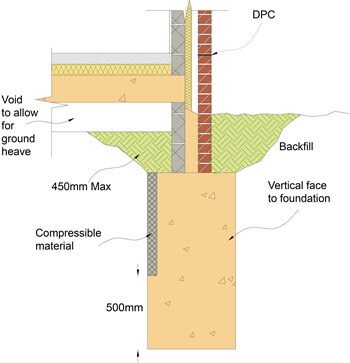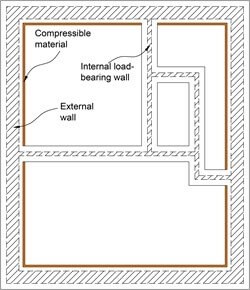What affects the amount of heave following tree removal?
- Maturity of the tree
- Permeability of the soil
- Availability of free water
It is difficult to say exactly how long it will take for the ground to recover. It can take as little as a few winter months up to as many as 25 years!
However the points above will help to give you an idea of what will affect the amount of heave and thus the recovery time of the soil.
In other words the more mature the tree the more water it would have absorbed and thus the more movement that will occur as the water finds a new place to go.
What can you do to reduce the effects of heave?
1. Allow for the possibility of heave where existing trees may mature or die
If a tree exists within the plot you are building on there is a probability that it could die at some point during the lifecycle of the building. This is especially the case where the tree has dried out the soil prior to foundations being laid.
To alleviate issues of soil swelling from existing trees you can sever the roots within the footprint of the building’s foundations to allow the soil to rehydrate.
2. Determine foundation depth for your ground conditions
The easiest way to determine the correct depth for your foundations when it comes to trees is to use our Foundation Depth Calculator.
This will take into account the proximity of the tree and the type of soil, among other factors, to calculate the depth required up to a maximum depth of 2.5m.
Foundations in excess of 2.5m will require a site-specific assessment to be undertaken by a suitably qualified and experienced expert.
3. Consider alternative methods of foundations
The depth of the foundations required will determine which foundation method is most suitable.
For example, for depths up to 1.5m, trench fill foundations may be the most economic but for those in excess of 2m, pile foundations with ground beams would be recommended.
If the foundation depth is greater than 1.5m, a proprietary compressible material must be placed on all inside surfaces of the peripheral foundations to allow for lateral soil swelling, as shown in the diagrams below.


.jpg?width=350&name=figure-8_350x363%20(1).jpg)
For more information on foundations, trees and clay check out Section 5.2 of our Technical Manual.

